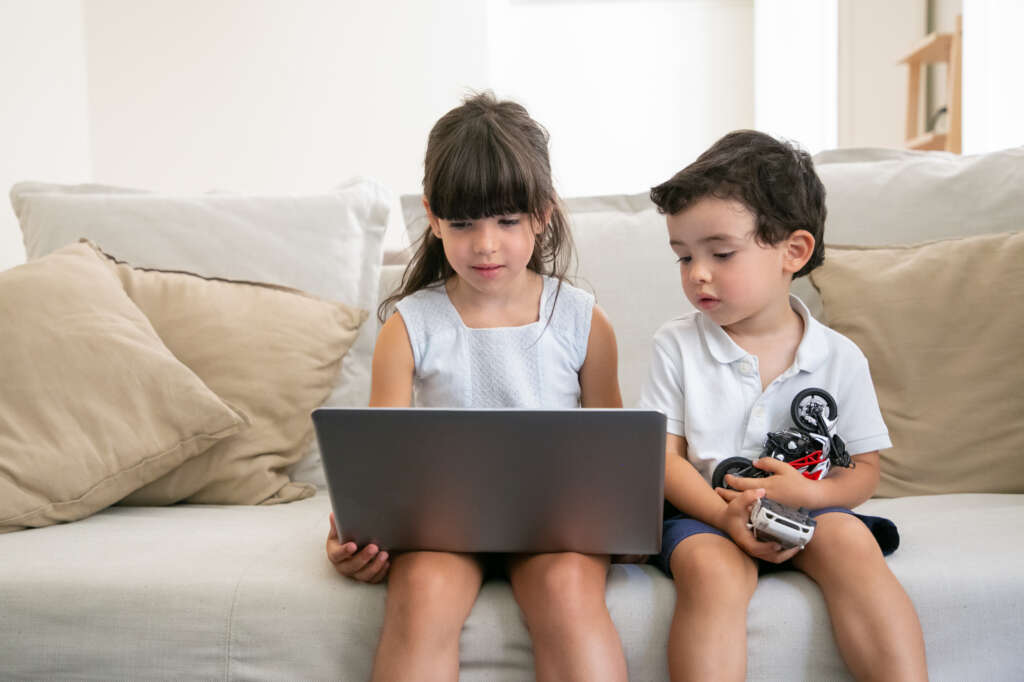These days not just adults, kids are also a lot into screens, whether online classes, video games, or social media. They spend much time on screens rather than doing physical activity. But it’s essential to reduce their screen time since this can cause impact to their emotional, physical, and mental health but most times this leads to conflict with them. Let’s try to see how to help kids reduce screen time without fights with effective 10 strategies.

1. Understand the Root Cause of Excessive Screen Time
Before proceeding to any Parenting screen time strategies we should first try to understand why they are spending so much time on screens
-
- Boredom: Lack of engaging alternatives.
-
- Social Interaction: Staying connected with friends.
-
- Entertainment and Escapism: Seeking fun or avoiding stress.
Data Insight
A study by Common Sense Media revealed that 8-12-year-olds spend an average of 4 hours 44 minutes daily on screens. By understanding the “why,” you can address the root causes rather than just the behavior.
2. Collaboratively Set Boundaries
There is also a revolt with rules. Children are more likely to follow the rules they help create. Discuss alternatives to screen time for kids together and explain the reasons behind them.
Use Specific Time Blocks
Create screen-free times, such as during meals, before bedtime, or while doing homework.
Example: “Screens off after 8 PM”
Digital Well-Being Apps
Leverage apps like Google Family Link or Apple Screen Time to monitor and limit screen usage.
3. Replace Screen Time with Fun, Engaging Activities
Search for alternative activities which they can engage per the basis of 6their interest
-
- Creative Projects: Drawing, painting, or building models.
-
- Outdoor Games: Cycling, soccer, or a family hike.
-
- Board Games and Puzzles: Family game nights can be a great bonding experience.
Data Insight
Studies show that children are 80% more likely to engage in non-screen activities when parents actively participate.
4. Lead by Example
Children learn by observing. If they see parents glued to their screens, they’re more likely to imitate that behavior.
-
- Practice what you preach by designating screen-free times for the entire family.
-
- Engage in shared activities like cooking or gardening.
Case Study
In a family experiment conducted by Digital Detox HQ, parents who reduced their own screen time saw a 35% decrease in their children’s screen usage within a month.
5. Make Technology-Free Zones
Its always a good idea to discuss with your kids no-tech zone, especially on eating times.Some areas where you can implement
-
- Dining areas for uninterrupted meals.
-
- Bedrooms to promote better sleep hygiene.
-
- Study zones for focused learning.
6. Educate Kids on the Impact of Excessive Screen Time
Kids will revolt less if they understand the impact of excessive screen time. Children are more likely to listen when information is relatable and engaging.
Fun Fact: “Did you know too much screen time can make your eyes tired and your sleep worse?”
Data Insight: Blue light suppresses melatonin by up to 23%, disrupting sleep cycles.
Encourage Critical Thinking
Ask questions like, “What else could you do with the extra time you’ll save from screens?”
7. Encourage Social and Family Bonding Activities
Plan fun family activities like movie nights, picnics, or storytelling sessions, or encourage your child to participate in community events or sports clubs for real-world social interaction.
8. Use Rewards and Positive Reinforcement
Instead of focusing on punishments, reward your child for meeting screen time goals.
Examples: Extra playtime outside, choosing a weekend family activity, or a small gift.
Gamify the Experience
Turn reducing screen time into a challenge. Example: For every hour off-screen, they earn points redeemable for fun rewards.
9. Be Patient and Flexible
Change won’t happen overnight. Celebrate small victories and continue to encourage healthier habits.
Avoid Power Struggles
Keep discussions about screen time positive and collaborative to avoid unnecessary conflicts.
10. Seek Professional Guidance if Needed
If screen time is significantly affecting your child’s mental or physical health, consider consulting a pediatrician or family counselor for guidance.
At last, by understanding their motives, involving them in decision-making, and offering engaging alternatives we can control how much our kids getting exposed to the digital world. t’s all about balance, cooperation, and leading by example to create a screen-free environment that nurtures family bonding and individual growth.
Hope your liked our 10 strategies on how to Help Kids Reduce Screen Time Without Fight. In case you have tried something as Parenting tips to manage kids’ screen habits which have worked do share with us for others experience and we will also try to include those in our list on Effective strategies for limiting screen time in kids.
Key references :-
Common Sense Media Study
-
- Title: The Common Sense Census: Media Use by Tweens and Teens 2021
American Academy of Pediatrics (AAP) Guidelines
-
- Title: AAP Guidelines on Children’s Media Use
-
- Link: https://www.aap.org
Digital Detox HQ Case Study
-
- Title: The Impact of Parental Screen Reduction on Children’s Screen Time
Harvard Medical School Study on Blue Light
-
- Title: Blue Light Has a Dark Side
Stanford Children’s Health Report
-
- Title: The Effects of Too Much Screen Time
World Health Organization (WHO)
-
- Title: Guidelines on Physical Activity, Sedentary Behavior, and Sleep for Children
-
- Link: https://www.who.int
Family Zone Research
-
- Title: The Importance of Family Digital Boundaries
Mayo Clinic Health Systems
-
- Title: Kids and Screen Time: Healthy Limits
Pew Research Center Report
-
- Title: Parenting Children in the Age of Screens
UNICEF Research
-
- Title: Children and Digital Technology: How Do We Balance?
- Link: https://www.unicef.orgAlternatives to screen time for kidswh


